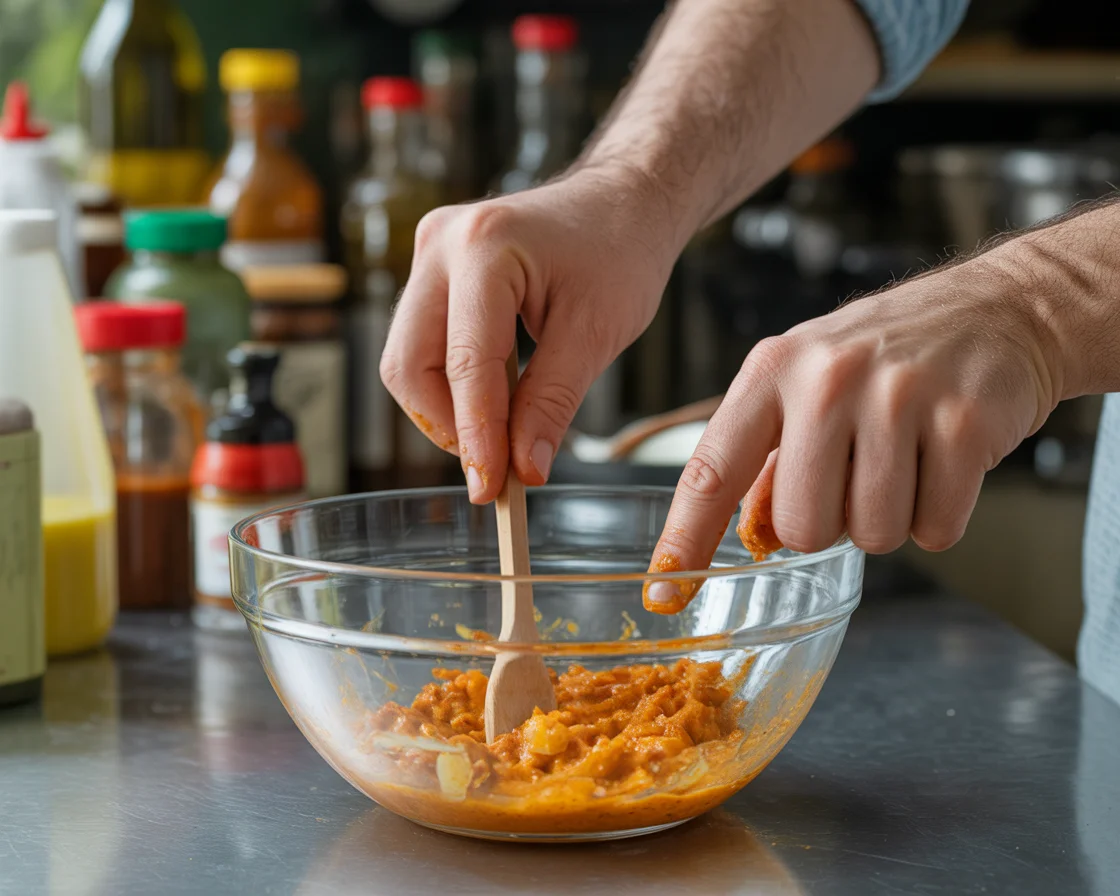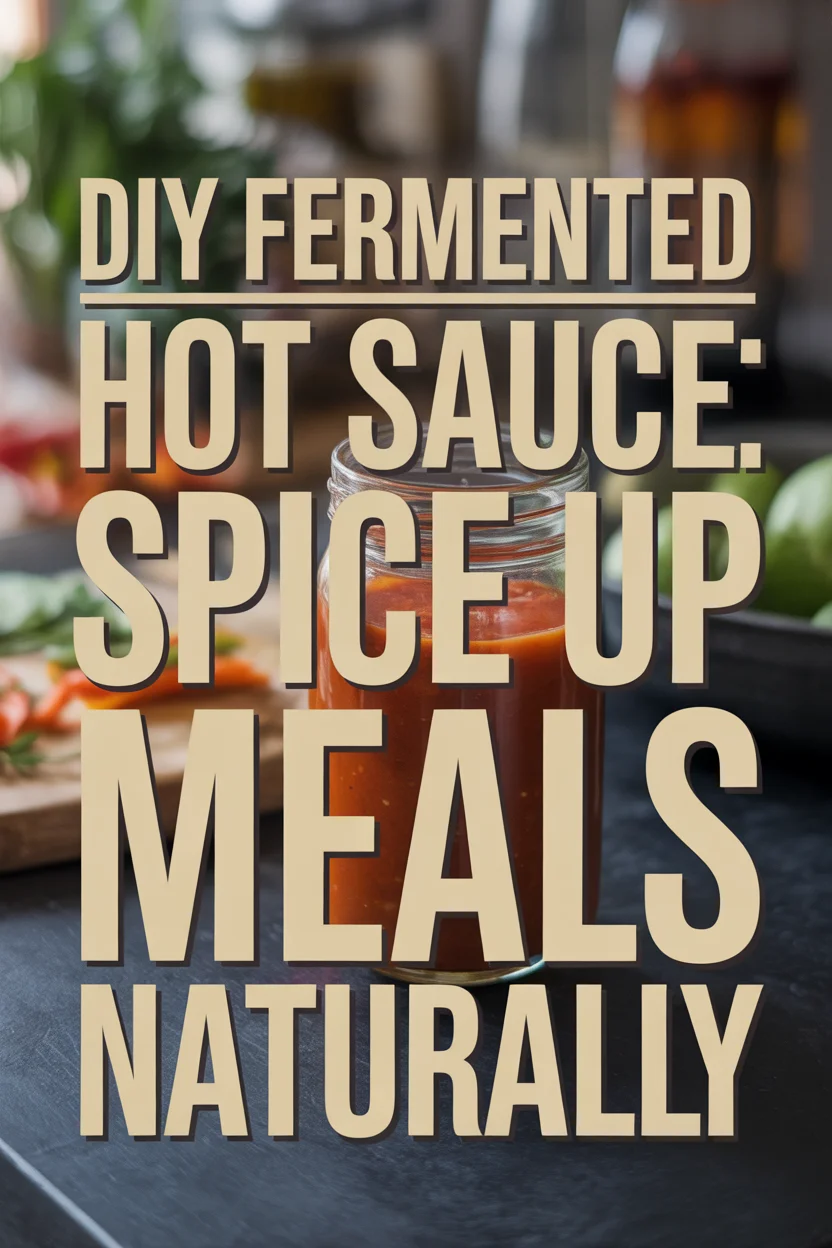Fermented hot sauce is my secret weapon in the kitchen. Ever spend way too much on a fancy bottle of sauce, then realize it tastes like plain vinegar and regret your life decisions? Yeah, me too. Luckily, making your own is easier than you think. You just need a bit of patience and a few zippy peppers. Plus, the flavor—oh my word—the flavor is in a whole other league from store-bought. You’ll never want supermarket hot sauce again after giving this a try. 
Why You’ll Love Fermented Hot Sauce
So, first big reason to fall head-over-heels: control. You decide the heat. Want it to blow your socks off? Easy. Prefer something tamer? Toss in more sweet peppers. Then there’s the funk—it’s the good kind, I promise. You get a tang that’s alive and tasty, not flat like shelf sauce.
Plus, making it just feels cool. Honestly, folks will think you’re some kind of food wizard. And it’s good for you! Fermented goodies are packed with beneficial bacteria. My gut is happier since switching to homemade. My brother-in-law’s obsessed. Every time I see him, he reminds me, “You bringing more sauce, right?” Family’s strange, but I guess that means it’s good.
“I started out just curious, but now I always have a batch fermenting. The taste is honestly on another planet compared to bottled hot sauce. Tangy, fresh, and just… fun.” — Mark S., real-life Pepper Enthusiast

How to Make Fermented Hot Sauce
I’ll walk you through this. Seriously, don’t panic. It’s pretty chill.
First off, gather your stuff. You’ll need a bunch of fresh peppers (I like mixing hot ones like jalapeños or habaneros with bell peppers somehow), garlic if you want, and non-iodized salt. The salt matters—a lot—so grab the real deal, not table salt.
Chop everything up. Toss it (careful, those spicy fumes get wild if you’re not ventilated) into a clean jar. Sprinkle on the salt. Mush it a bit with the butt end of a spoon so peppers release some juice. Pour in just enough filtered water to cover.
Now the fun: stuff a smaller jar or weight over the peppers. Just keep ’em submerged. Screw the top on loosely—gas needs to escape, or you’ll get a messy bubbling volcano situation. Park the jar out of the sun, room temp, and wait. Usually, about a week for mild tang, or up to two for a wild ride.
When it’s all bubbly and smells a bit pickly, blend it up. Strain if you want it super smooth. Taste. Add vinegar if it needs one more kick.
Done! Store in the fridge. Or, you know, slather over everything immediately. 
What is Fermentation? And Why is it Good For Hot Sauce?
Fermentation is basically nature’s way of making food cooler and more flavorful. You mix peppers and salt; wild little bacteria show up and start working their magic. They eat up sugars, create acids, and boom—suddenly you have a sauce that’s tangy, spicy, and even a little funky (in a good, alive way).
Why is this good for hot sauce? First, it cranks up the complexity big time. Fermented hot sauce isn’t just hot. It’s got layers—like a five-star restaurant on your eggs. And those acids from the ferment help preserve your sauce naturally, so it’ll last ages in the fridge.
If you’re one of those probiotic folks, it’s got benefits for the ol’ gut, too. Science geeks call it “lacto-fermentation.” I just call it delicious.
Useful Equipment
To make life easier, here are some things you’ll want nearby:
- A good clean jar for fermenting—Mason or Weck jars are classic
- A glass weight or smaller jar for pushing those peppers under the brine (don’t let them float, or mold might visit)
- Gloves, especially if you’re messing with super-hot peppers (trust me, rubbing your eye after? Worst. Idea. Ever.)
- A regular blender or even an immersion blender for finishing the job (I used to struggle with a food processor—messy.)
You don’t need a fancy kit. But the right basics keep things simple and clean. Also, keep some paper towels on standby. Fermentation can get a bit wild, and things bubble over sometimes.
Storage & Shelf-Life
Once your magical jar of spicy goodness is ready, you want to keep it fresh. Here’s what works for me:
After blending and bottling, stash it in the fridge. Fermented hot sauce will hold its punchy flavor for ages. I mean, I’ve had some last months without going weird—just keep the jar clean and use a clean spoon (no double dipping). If white yeasty stuff shows up on top, just scoop that off. It’s called kahm yeast and it’s not dangerous, but if it smells bad or looks like green mold, toss it out and start over.
You’ll probably use it up way faster than you think, anyway.
Serving Suggestions
Here come my favorite ways to use this (some are a bit weird, but don’t knock ’em till you try):
- Splash it all over your eggs for a breakfast wake-up.
- Add a dash to tacos, pizza, or even homemade mac ‘n cheese if you’re feeling wild.
- Stir a spoonful into ranch or mayo for a next-level sandwich spread.
- Brush on roasted veggies for an instant flavor boost.
I mean, I’ve even snuck it into a margarita once. You only live once, right?
Common Questions
Q: Can I use any peppers?
A: Absolutely! Mix hot and sweet for a flavor you like. Just watch out, those little red guys pack serious heat.
Q: How long does it take to ferment?
A: Usually 1 to 2 weeks. It depends on your room temp and how tangy you want it.
Q: What if my peppers float?
A: Use a weight (even a smaller jar or plastic bag with water) to keep them under the brine so they do not get moldy.
Q: Is it safe if it bubbles?
A: 100%. That bubbling means the good stuff is happening.
Q: Do I have to add vinegar at the end?
A: It’s totally optional. It gives an extra tart zing if you’re into that vibe, but the sauce is fine without it.
Ready for a Wildly Tasty Adventure?
Alright, if you’re still reading, I’m just gonna say it. Made-from-scratch stuff always kicks butt over store-bought, especially with something as zippy as this. Just follow the steps, and soon enough you’ll have a homemade jar that beats most of what’s lining the grocery shelves. Trust me, your breakfast wants this. For another killer (and totally approachable) recipe, check out Fermented Hot Sauce – Simple and Delicious! | Feasting At Home if you’re craving even more ideas. Healthy, offbeat, and wildly customizable—what’s not to love? Let your tastebuds run wild, friends. 

Fermented Hot Sauce
- Total Time: 10080 minutes
- Yield: 1 jar (varies by jar size)
- Diet: Vegan
Description
Discover the magic of homemade fermented hot sauce, packed with tangy flavor and beneficial bacteria.
Ingredients
- Fresh hot peppers (jalapeños, habaneros)
- Sweet bell peppers
- Garlic (optional)
- Non-iodized salt
- Filtered water
Instructions
- Chop the peppers and garlic (if using).
- Place them in a clean jar with salt and mash slightly to release juice.
- Add enough filtered water to cover the ingredients.
- Use a weight to keep the peppers submerged and secure the jar loosely to allow gas to escape.
- Store the jar at room temperature away from sunlight for 1-2 weeks.
- Once fermented, blend the mixture until smooth, straining if desired. Add vinegar for extra kick if preferred.
- Store in the fridge and enjoy immediately or later.
Notes
Ensure to use non-iodized salt for fermentation. Use a weight to prevent mold from forming.
- Prep Time: 15 minutes
- Cook Time: 10 minutes
- Category: Condiment
- Method: Fermentation
- Cuisine: General
Nutrition
- Serving Size: 1 tablespoon
- Calories: 15
- Sugar: 1g
- Sodium: 100mg
- Fat: 0g
- Saturated Fat: 0g
- Unsaturated Fat: 0g
- Trans Fat: 0g
- Carbohydrates: 3g
- Fiber: 0g
- Protein: 1g
- Cholesterol: 0mg
